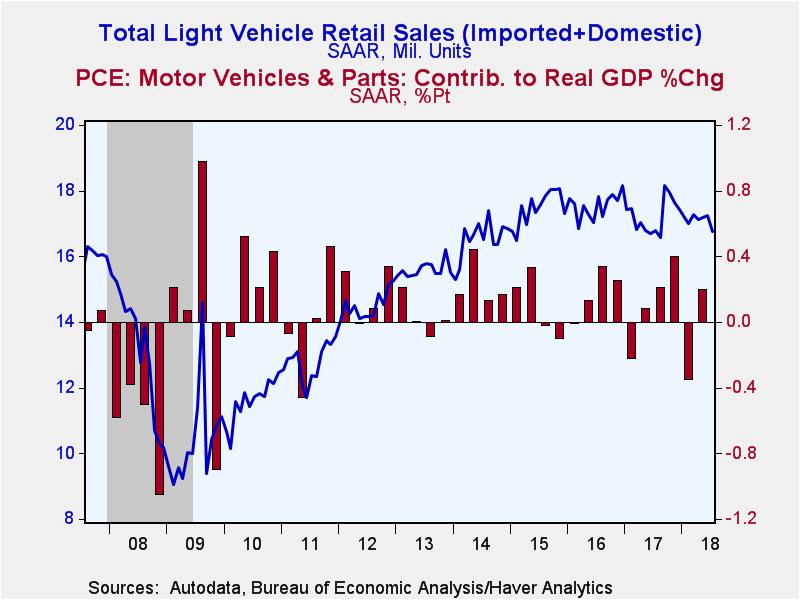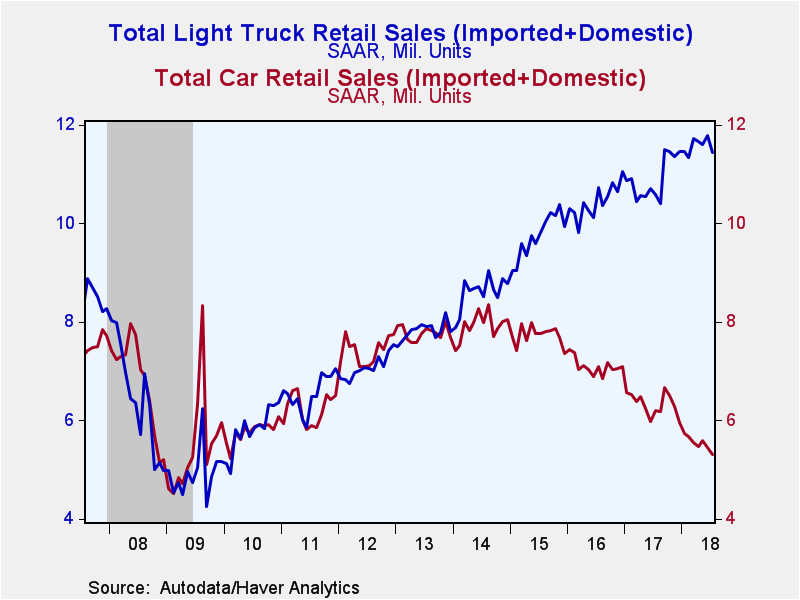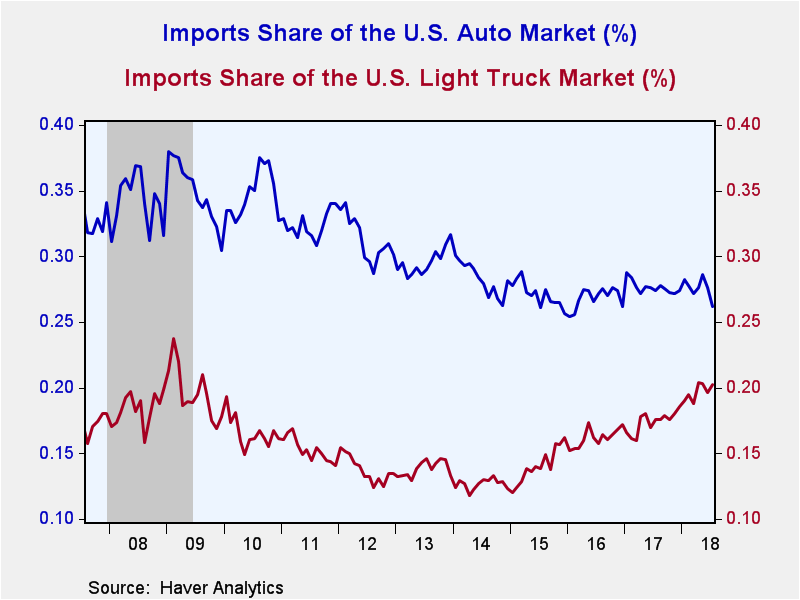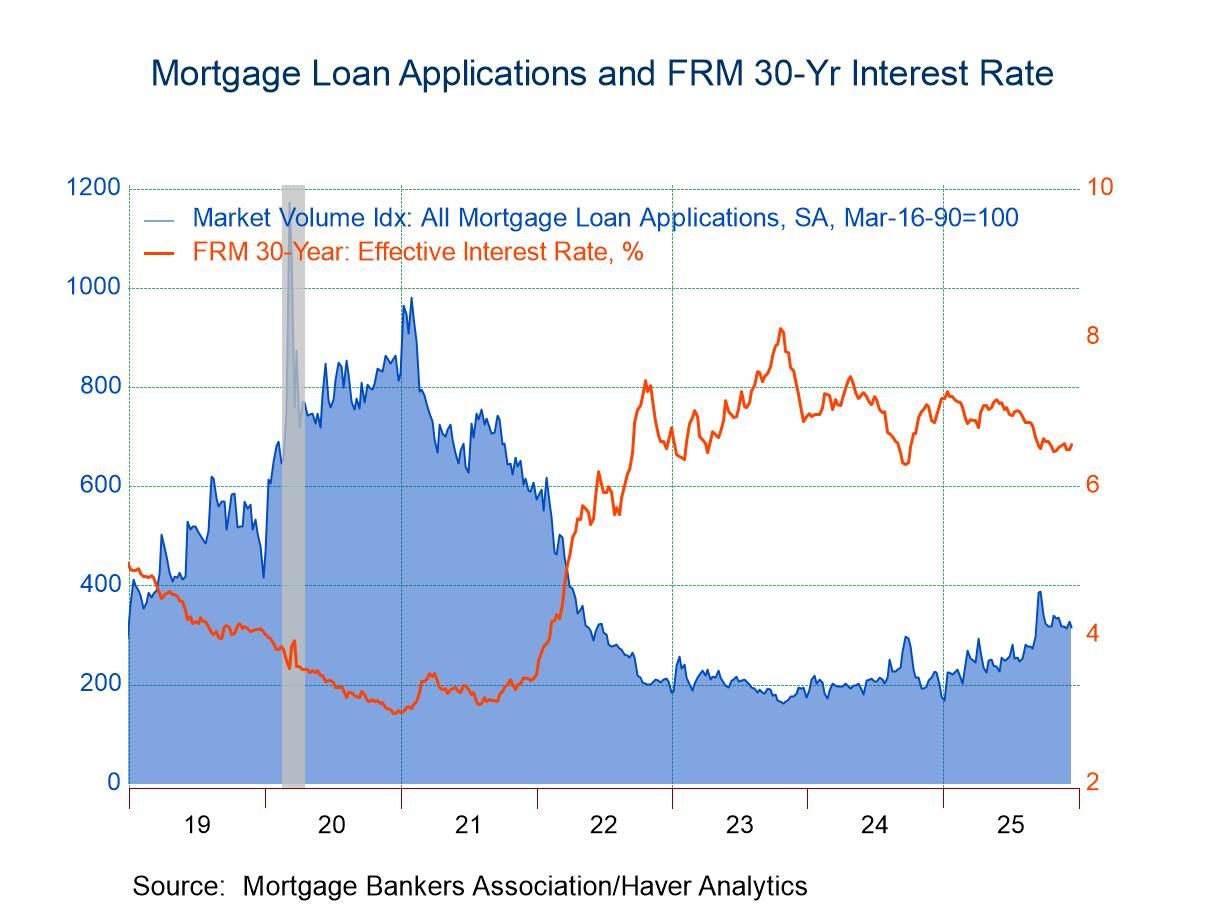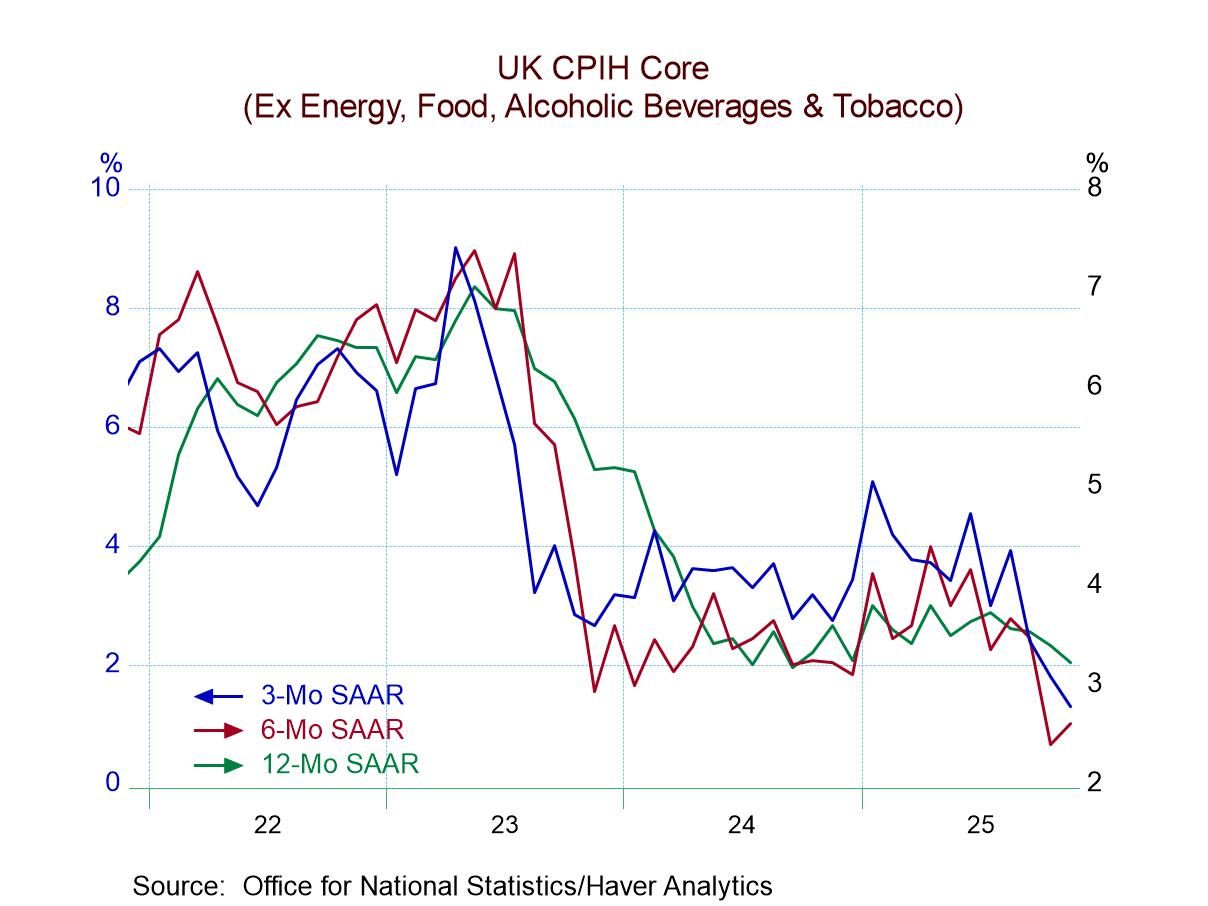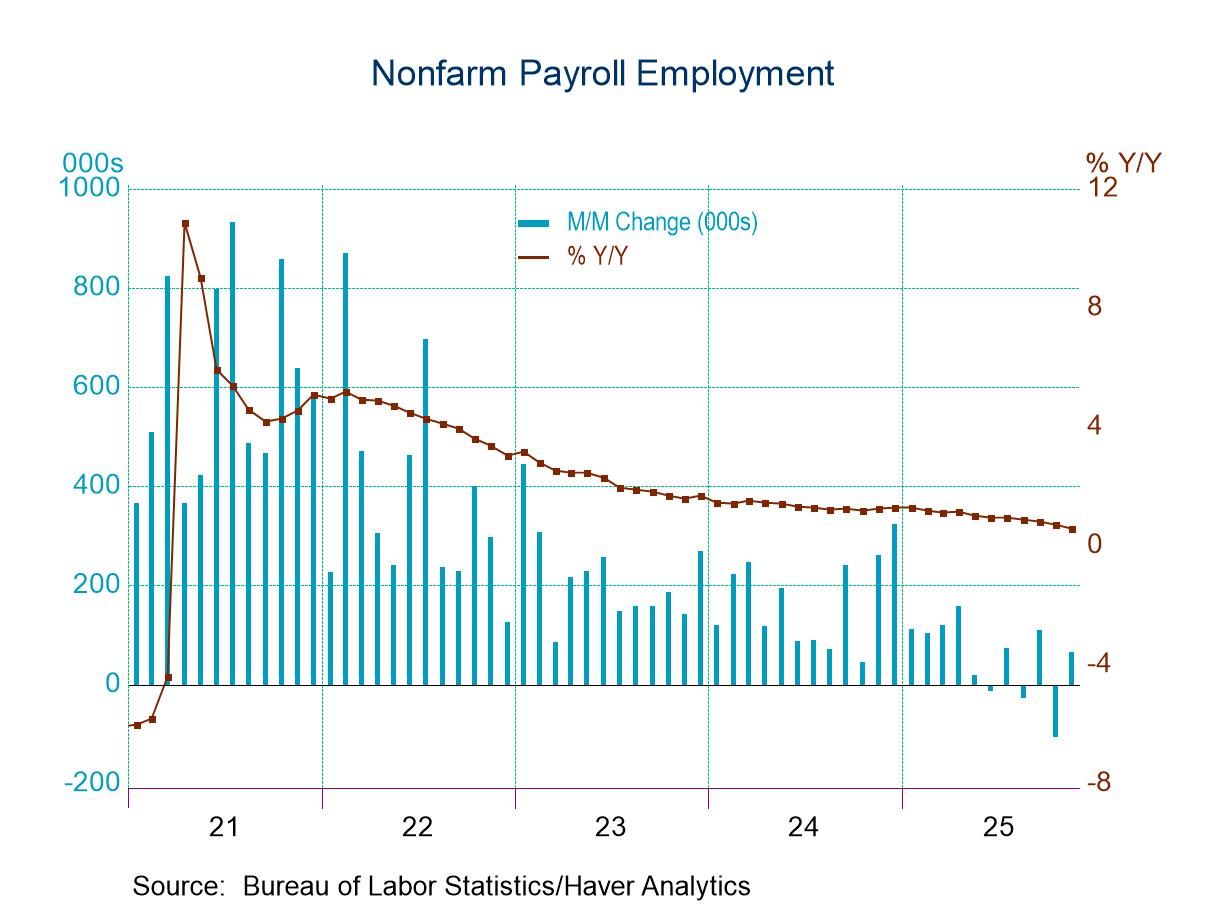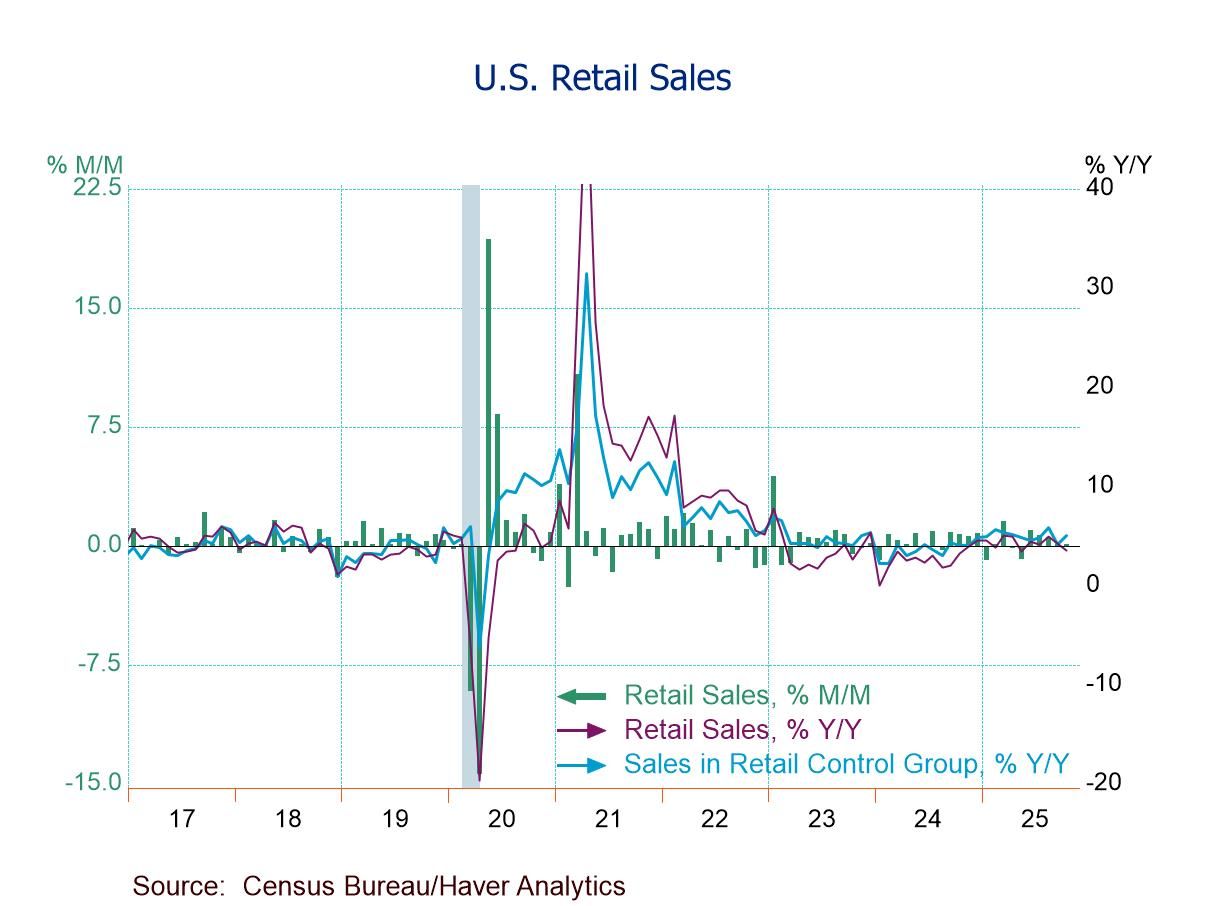 Global| Aug 01 2018
Global| Aug 01 2018U.S. Light Vehicle Sales Decline
by:Tom Moeller
|in:Economy in Brief
Summary
Total sales of light vehicles fell 2.7% during July (-0.1% y/y) to 16.77 million units (SAAR), the lowest level since August of last year according to the Autodata Corporation. The decline left sales 7.7% below the 18.16 million unit [...]
Total sales of light vehicles fell 2.7% during July (-0.1% y/y) to 16.77 million units (SAAR), the lowest level since August of last year according to the Autodata Corporation. The decline left sales 7.7% below the 18.16 million unit high reached last September. July sales have declined 3.8% since December, following a 4.0% December-to-December shortfall during 2017. During Q2'18, personal consumption expenditures of motor vehicles & parts contributed 0.2 percentage points to the increase in real GDP as total vehicle sales eased 0.2% from Q1. The vehicle sales data were revised back through 2016.
Sales of light trucks declined 2.8% (+8.2% y/y) last month to 11.45 million units, down only slightly from the record high. Domestic light truck sales were off 3.5% (+4.8% y/y) to 9.14 million units. Sales of imported light trucks were roughly unchanged (+24.3% y/y) at 2.32 million units.
Trucks' share of the U.S. vehicle market held steady at 68.3% in July and remained up versus 63.3% during all of last year and 48.8% during all of 2008.
Passenger car sales fell 2.5% (-14.2% y/y) to 5.32 million units. Sales of domestically-made autos eased 0.6% (-12.7% y/y) to 3.93 million units. Sales of imported passenger cars fell 7.6% (-18.0% y/y) to 1.39 million units.
Imports' share of the U.S. vehicle market was steady at 22.1% last month, up from 19.9% in 2015. Imports' share of the passenger car market fell to 26.2% from 27.7% last year. Imports share of the light truck market increased to 20.2%, up from a 12.7% low during 2014.
U.S. vehicle sales figures can be found in Haver's USECON database.
| Jul | Jun | May | Jul Y/Y % | 2017 | 2016 | 2015 | |
|---|---|---|---|---|---|---|---|
| Total | 16.77 | 17.24 | 17.19 | -0.1 | 17.23 | 17.55 | 17.48 |
| Autos | 5.32 | 5.45 | 5.59 | -14.2 | 6.33 | 7.10 | 7.73 |
| Domestic | 3.93 | 3.95 | 3.99 | -12.7 | 4.58 | 5.20 | 5.63 |
| Imported | 1.39 | 1.51 | 1.60 | -18.0 | 1.75 | 1.90 | 2.10 |
| Light Trucks | 11.45 | 11.78 | 11.60 | 8.2 | 10.90 | 10.45 | 9.74 |
| Domestic | 9.14 | 9.47 | 9.25 | 4.8 | 9.00 | 8.75 | 8.37 |
| Imported | 2.32 | 2.31 | 2.35 | 24.3 | 1.90 | 1.69 | 1.38 |
Tom Moeller
AuthorMore in Author Profile »Prior to joining Haver Analytics in 2000, Mr. Moeller worked as the Economist at Chancellor Capital Management from 1985 to 1999. There, he developed comprehensive economic forecasts and interpreted economic data for equity and fixed income portfolio managers. Also at Chancellor, Mr. Moeller worked as an equity analyst and was responsible for researching and rating companies in the economically sensitive automobile and housing industries for investment in Chancellor’s equity portfolio. Prior to joining Chancellor, Mr. Moeller was an Economist at Citibank from 1979 to 1984. He also analyzed pricing behavior in the metals industry for the Council on Wage and Price Stability in Washington, D.C. In 1999, Mr. Moeller received the award for most accurate forecast from the Forecasters' Club of New York. From 1990 to 1992 he was President of the New York Association for Business Economists. Mr. Moeller earned an M.B.A. in Finance from Fordham University, where he graduated in 1987. He holds a Bachelor of Arts in Economics from George Washington University.


